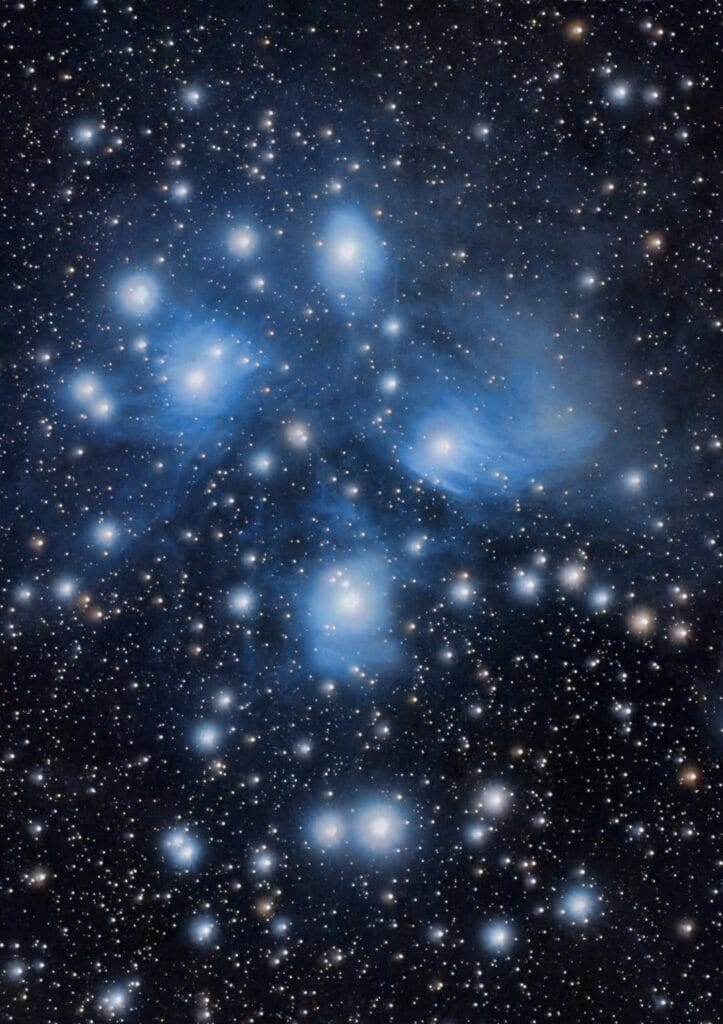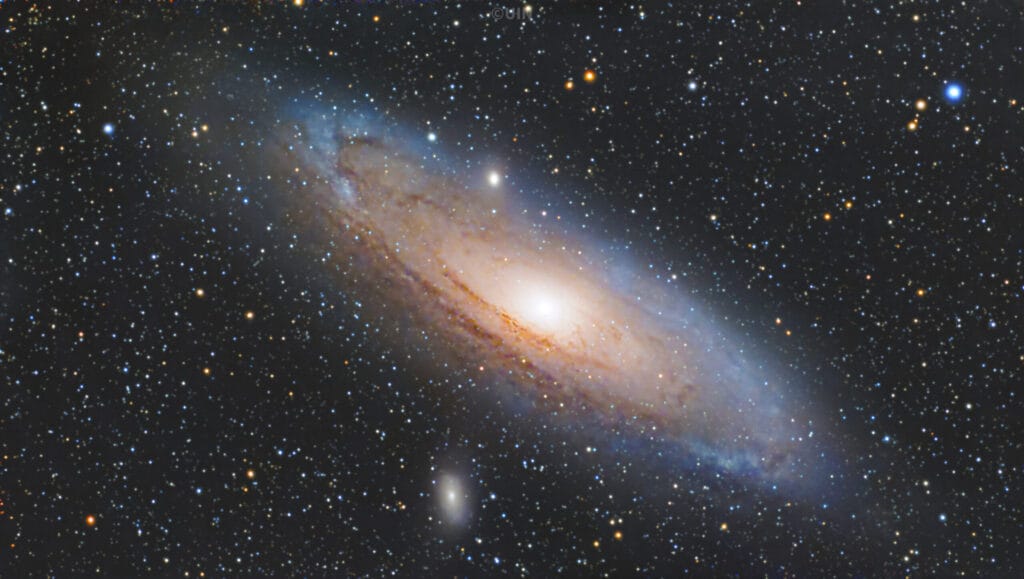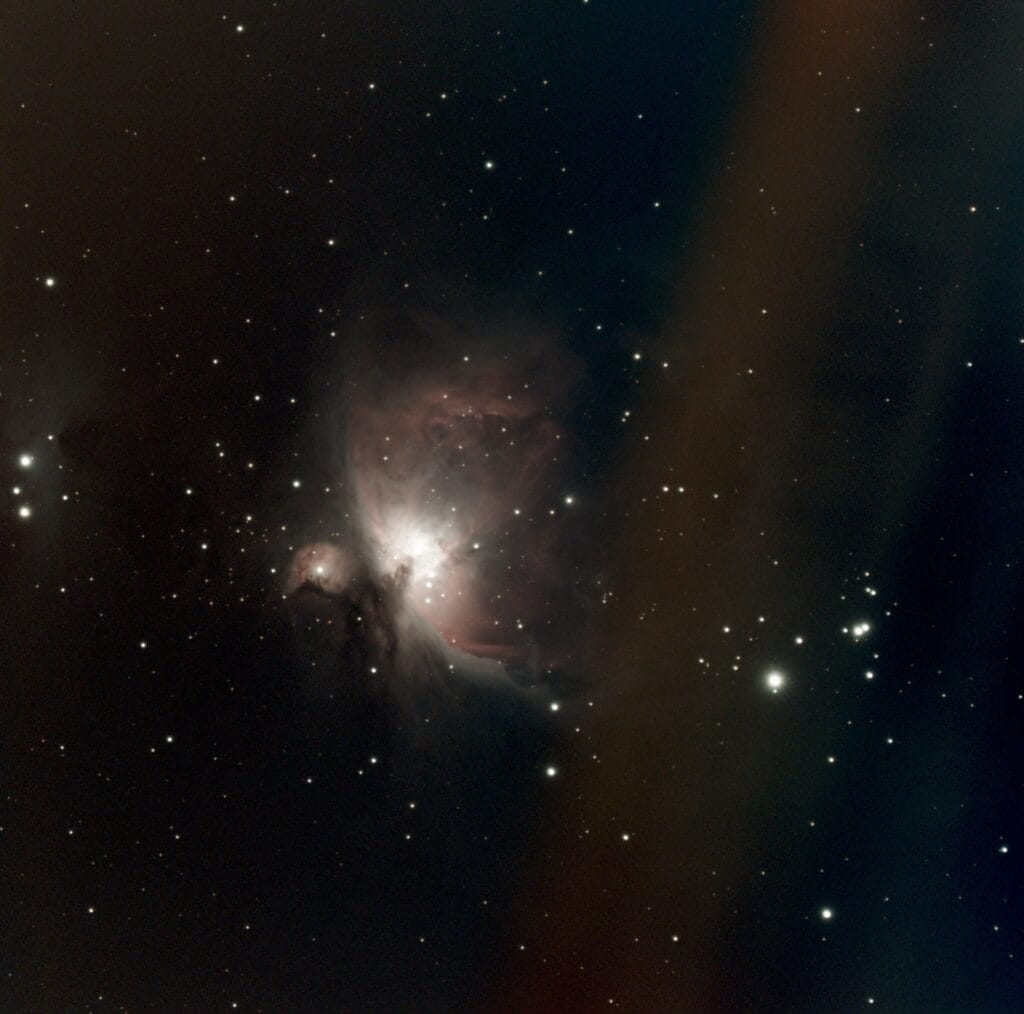The question what can you see with a smart telescope lives with many novice astrophotographers and stargazers. Smart telescopes promise simplicity, automatic tracking and impressive photos - but what can you really see with them? In this blog, we provide a realistic overview of the possibilities, including examples of deep-sky objects and tips by object type.
Deep-sky objects: from nebulae to galaxies
Most smart telescopes, such as the Seestar S30, S50 or the Dwarf 3, are designed to capture large and relatively bright deep-sky objects. Consider:
- The Andromeda Nebula (M31): the nearest galaxy. Large, bright and popular as a first deep-sky photo.
- The Pleiades (M45): a bright open cluster with a blue glow. Very suitable for short exposures.
- The Orion Nebula (M42): visible in winter, with lots of structure and color in H-alpha and OIII.
- The Veil Nebula (NGC 6960 & NGC 6992): beautiful with a UHC filter, especially at longer exposures.
- Lagoon Nebula (M8) and Trifid Nebula (M20): summer objects in the constellation Sagittarius.
These objects are large enough to fit within the field of view of smart telescopes, and bright enough to come into their own with live stacking. Especially under dark skies, they produce remarkably good results.
Planets and the Moon: limited, but possible
Smart telescopes are not primarily intended for planetary photography. Because of their relatively short focal length, you don't get much magnification. Still, you can:
- Imaging the moon in great detail
- Capturing Jupiter with its four largest moons
- Capture Saturn as a single entity without rings (small, but recognizable)
Don't expect close-ups with details of cloud bands or Cassini separation; classic telescope systems with long focal lengths are better suited for that.
What makes a smart telescope so effective?
- Live Stacking: automatically combining dozens of photos into one clear shot
- Automatic calibration: no need to make darks or flats
- Object recognition via app: no star maps or alignment required
- AI support: automatically selects exposure time, focus and tracking
All this lowers the threshold tremendously. Where before you needed an equatorial mount, autoguiding, filters and hours of preparation, now you set up a Seestar on a garden table and have your first shot within 5 minutes.
Some models compared
The market for smart telescopes is growing rapidly. Here is a brief comparison:
- Seestar S30: ideal for beginners, quick to set up, wide field of view. Very popular due to its value for money.
- Seestar S50: Higher resolution and slightly more zoom than the S30. Better for smaller nebulae.
- Dwarf 3: offers more manual control, better sensor and even EQ mode. Perfect for those who want to learn more.
- Vaonis Vespera II / Pro: premium image quality and build quality. Smart, but pricey.
- Unistellar models: Combine visual observation with photography. Good for educational settings, but very expensive.
- Celestron StarSense Explorer (130/650 Dobson): not really ‘smart,’ but via smartphone navigation easy to find objects and view them visually.
Comparison with classical astrophotography
Anyone with experience in manual astrophotography will recognize it: set-up time, aligating, guiding, cables, settings, processing. Smart telescopes replace all those steps at the push of a button. But that also means: less control and no ability to use your own filters, lenses or cameras, for example. Think of it as a smartphone camera versus a DSLR: less flexible, but lightning fast and easy to use.
For many people, that is precisely the strength: you don't have to learn anything before you can enjoy yourself. And those who get the hang of it can always switch to a more advanced system later.
Realistic expectations
A smart telescope opens up the world of deep-sky astrophotography in an accessible way. But: don't expect images like those from the Hubble or James Webb. The power lies in simplicity, speed and consistency. You learn about the universe while making images and that's what makes it so addictive for many.
Images:



Got excited and want to see this for yourself, live, in your backyard or from your balcony? Order before 11:59 p.m. and within 48 hours you will have your telescope at home.







